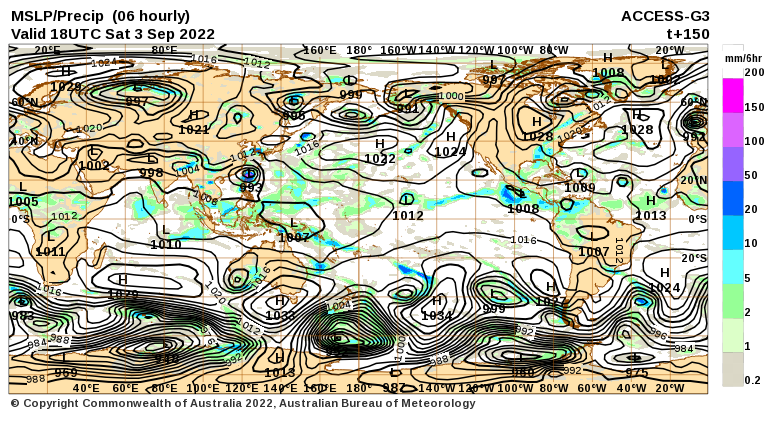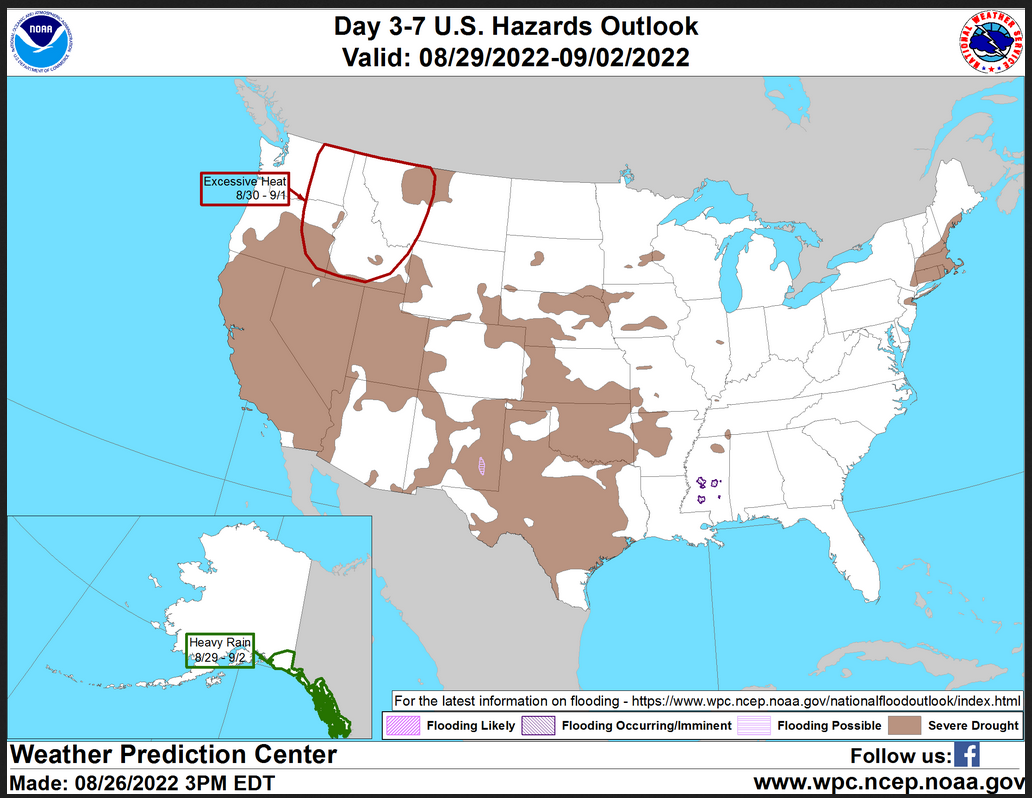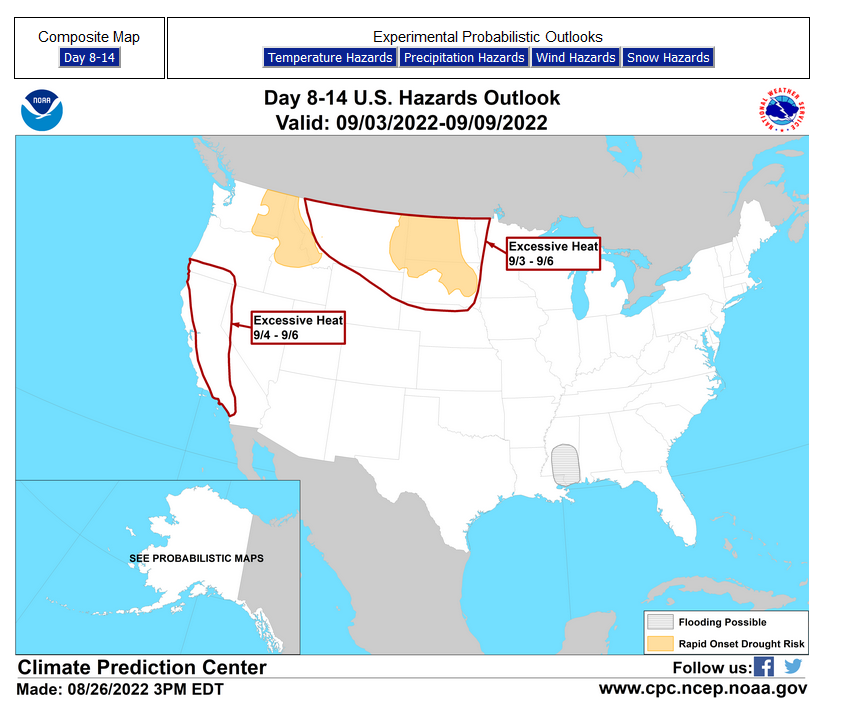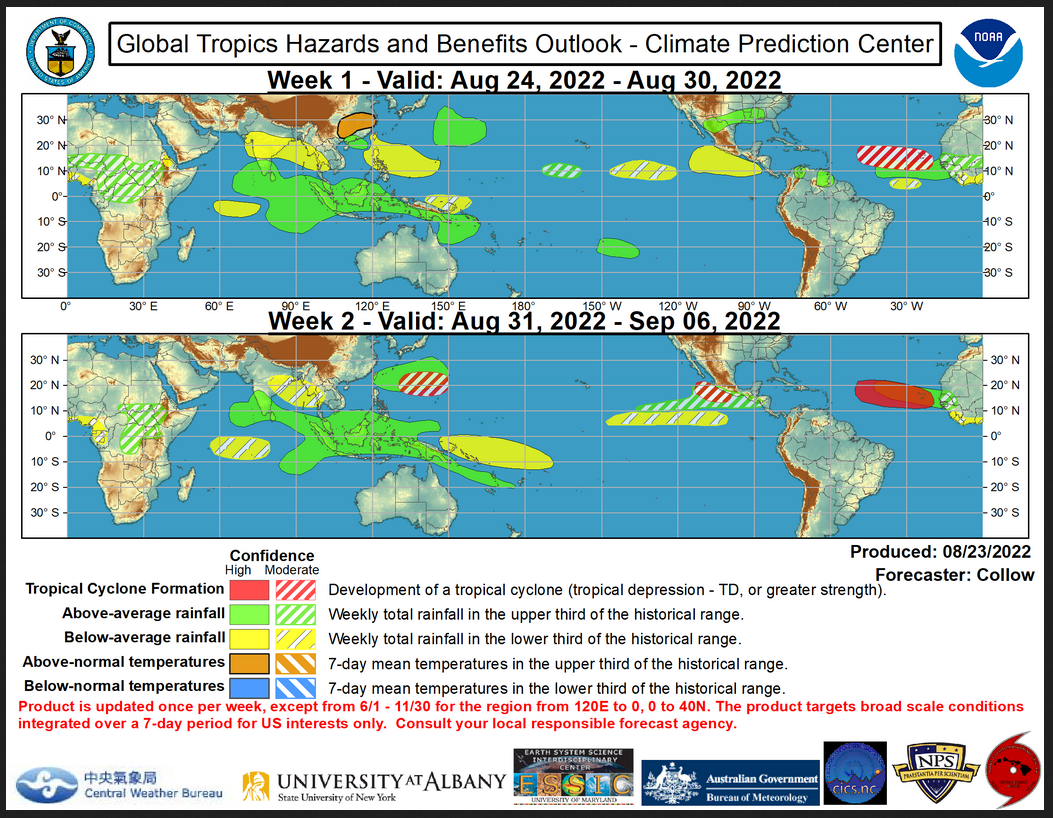Here is what we are paying attention to tonight and the next 48 hours from this evening’s NWS Forecast.
...Slight risk of severe thunderstorms across the Upper Mississippi Valley into early this evening... ...Showers and thunderstorms likely across the Midwest and the Gulf Coast/Florida... ...Warming trend begins for the Northwest and the Ohio Valley/Northeast...
Continuation of the NWS Short Range Forecast (It is updated twice a day and these updates can be found here.
An amplifying ridge over southern Canada will influence showers and thunderstorm activity in the Midwest over the next few days. A surface wave moving across the Upper Midwest will continue to be the focus for potentially severe thunderstorms into early this evening in Minnesota and southeastern Wisconsin/northern Illinois where slight risks of severe thunderstorms are in effect. Otherwise, showers and thunderstorms are expected to form along a cold front moving from the Upper Midwest tonight into the Ohio Valley on Monday and the Northeast by Tuesday. Isolated heavy rainfall over parts of the Ohio Valley may lead to localized flash flooding. Elsewhere, shortwave energy propagating through the Texas coast will support increased moisture flux into the region on Monday, leading to the potential for heavy rainfall and localized flash flooding concerns, particularly along the northern Texas coast. Continued troughing and southerly flow across Florida will contribute to continued showers and thunderstorm activity over the next few days, with heavy rain potential across western portions of the state. An upstream ridge over the West will amplify over the coming days, leading to a warming trend across the Northwest. Highs in the 90s may tie or break records over parts of the Pacific Northwest on Tuesday as the ridge expands over the region. The amplifying trough in the East will pull warm moist air into the Ohio Valley, Appalachians and Northeast/Mid-Atlantic on Monday leading to highs in the upper 80s to low 90s. Widespread low temperature records may be broken Monday night from the Ohio Valley to the interior Northeast with temperatures in the upper 60s to mid 70s.
Maps that relate the forecast to geography can be found by clicking Here for Day 1 and Here for Day 2.
Here is a 60-hour animated forecast map that shows how the short-term forecast is expected to play out.
If it needs to be updated click here.
HAZARDS OUTLOOKS
Click here for the latest complete Day 3 -7 Hazards forecast which updates only on weekdays. Once a week probably Monday or Tuesday I will update the images. I provided the link for readers to get daily updates on weekdays. Use your own judgment to decide if you need to update these images.
Worldwide Tropical Forecast
(This graphic updates on Tuesdays) If it has not been updated, you can get the update by clicking here
Detailed Maps and Reports for the Western Atlantic and the Pacific Oceans
Below are three maps that summarize the situation for the Atlantic, Eastern and Central Pacific. Additional information can be accessed by clicking HERE
First the Atlantic
Click to view the forecast map and have access to additional information https://www.nhc.noaa.gov/gtwo.php?basin=atlc&fdays=5
Then Eastern Pacific
Click to view the forecast map and have access to additional information https://www.nhc.noaa.gov/gtwo.php?basin=epac&fdays=5
Then Central Pacific
Click to view the forecast map and have access to additional information https://www.nhc.noaa.gov/gtwo.php?basin=cpac&fdays=5
And the Western Pacific
Click to view the forecast map and have access to additional information https://www.metoc.navy.mil/jtwc/jtwc.html
Some Intermediate-Term Outlooks
Links to “Outlook” maps and discussions for three time periods. Days 6 – 10, Days 8 – 14, and Weeks 3 and 4. An outlook differs from a forecast based on how NOAA uses these terms in that an “outlook” presents information from deviation from normal and the likelihood of these deviations.
You have to click on the links because they do not update automatically and I do not want to have stale images in the article. But it is not difficult to click on a link and you get a large image plus a discussion. On Fridays in a separate article, we will show the images and provide a link in this article that article. But remember what you will see is the images as of Friday. But here you can get the current images simply by clicking on them. Then hit the return arrow at the upper left of your screen to return to the article. You will not find this information easily anywhere else.
Right now you can find these maps here (We show them every Friday there but you can click above and find them).
World Forecast for Day 6 (Currently Set for Day 6 but the reader can change that)
World Weather Forecast produced by the Australian Bureau of Meteorology. Unfortunately, I do not know how to extract the control panel and embed it into my report so that you could use the tool within my report. But if you visit it Cl ick Here and you will be able to use the tool to view temperature or many other things for THE WORLD. It can forecast out for a week. Pretty cool. Return to this report by using the “Back Arrow” usually found top left corner of your screen to the left of the URL Box. It may require hitting it a few times depending on how deep you are into the BOM tool. Below are the current worldwide precipitation and air pressure forecasts for six days out. They will not auto-update and right now are current for Day 6. If you want the forecast for a different day Click Here I will try to update this map each day but you have the link so you can access the dashboard and get a wide variety of forecasts.I mostly rely on the reader to interpret world maps. For this map, areas of expected precipitation for the date and time shown are clearly shown. The number of High-Pressure systems shown is called the Wave Number. Maybe I will discuss WN someday. But it shows how many Rossby Waves there are around the World. Sometimes they are hard to count. Counting Low-Pressure systems should provide the same WN. Rossby Waves are the way the temperature distribution of the Planet remains in balance. It is basically the science of fluid dynamics. It can be very helpful in predicting the movement of weather patterns. You can snip an area of interest and move it into MS Paint and enlarge it.
The number of High-Pressure systems shown is called the Wave Number. Maybe I will discuss WN someday. But it shows how many Rossby Waves there are around the World. Sometimes they are hard to count. Counting Low-Pressure systems should provide the same WN. Rossby Waves are the way the temperature distribution of the Planet remains in balance. It is basically the science of fluid dynamics. It can be very helpful in predicting the movement of weather patterns. You can snip an area of interest and move it into MS Paint and enlarge it.
Month to Date Information
Month to date Temperature can be found at https://hprcc.unl.edu/products/maps/acis/MonthTDeptUS.png
Month to date Precipitation can be found at https://hprcc.unl.edu/products/maps/acis/MonthPNormUS.png





